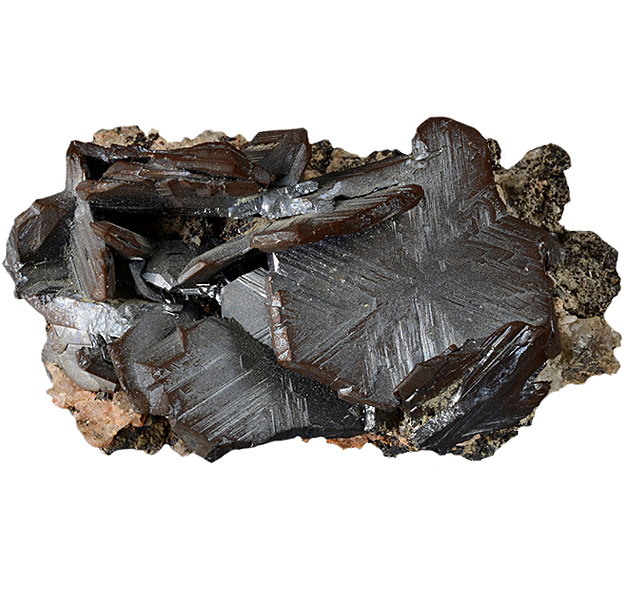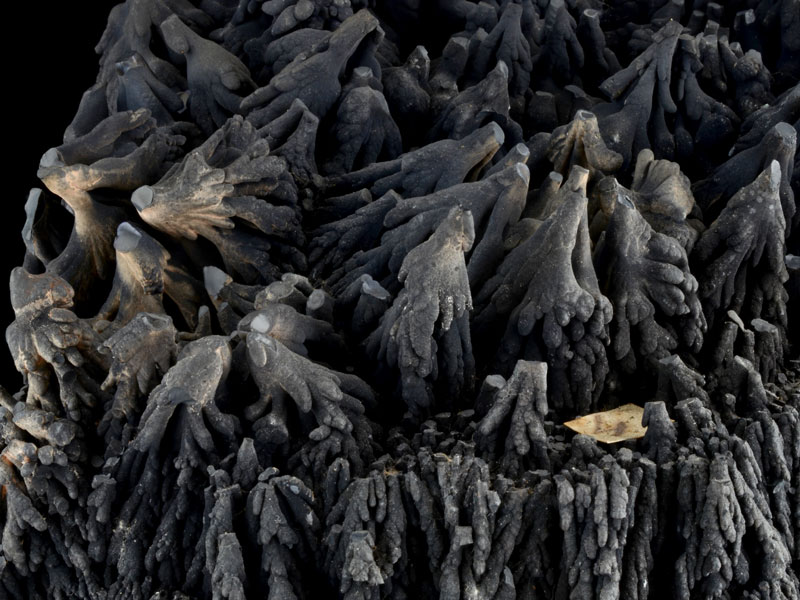
Fact sheet
Psilomelane is a group name used for undifferentiated black manganese oxides, the main mineral group from which the metal manganese is obtained.
Cornwall produced only small amounts of manganese. Most came from Ruthers mine, near St Columb Major and the rest from mines in the area around Launceston.
This specimen of stalactitic psilomelane came from Trebartha Lemarne mine, SW of Launceston. It was bought by the Royal Institution of Cornwall (RIC) from Lostwithiel-based mineral dealer Richard Talling in the early 1860s. Talling was one of the most significant mineral dealers in Cornwall; his handwritten number tag ‘4.’ can still be seen on this specimen. The printed labels refer to the RIC’s catalogue of its metallic minerals, compiled by Cornish mineralogist J H Collins, which was published in 1881.
Chemical analysis at the Open University in 2013 indicates that this mineral is actually the species romanèchite.
Generalised chemical formula:
Ba(Mn2+)(Mn4+)8O16(OH)4
Specimen no. TRURI: 801.3142
Location: Trebartha Lemarne, SW of Launceston
Grid Reference: SX 255 776
Mindat http://www.mindat.org/min-3304.html
This Collection focuses on Cornwall and West Devon’s mineralogical and mining heritage. The specimens it features are drawn from the collection of the Royal Institution of Cornwall (RIC) held at the Royal Cornwall Museum (RCM).
This collaborative project involving the RCM, the Cornish Mining World Heritage Site and The Open University explores how access to the RIC’s mineral collection and the stories it can tell can be widened using digital technology. It includes radioactive minerals from Cornwall that would otherwise be inaccessible to the public for health and safety reasons.
Sample details
More from this collection













